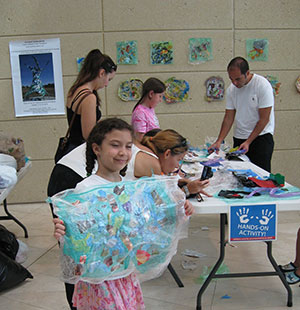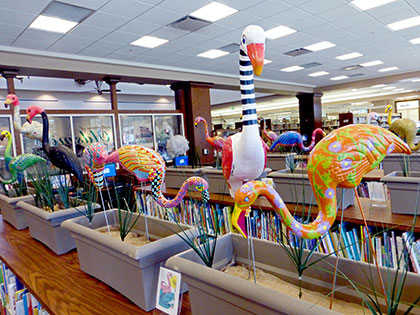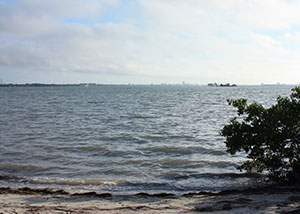NOAA grant helps region prepare for sea level rise
A $100,000 grant from the National Oceanic and Atmospheric Administration to the Tampa Bay Regional Planning Council will help the region prepare for sea level rise. Part of the Coastal Resilience Networks (CRest) program, the grant will leverage the existing ONE BAY: Livable Communities Working Group to improve regional capacity to withstand impacts associated with sea level rise, storm surge and extreme weather.
The ONE BAY: Resilient Communities Working Group will serve as an enhancement to the already-existing network of developers, urban designers, planners, business leaders, community organizers and private citizens who have begun to tackle various quality of life issues in the Tampa Bay region.
TBRPC will bring together the ad hoc efforts related to sea level rise and coastal hazards currently underway in the region by extending the existing ONE BAY framework and creating a new working group to address vulnerability to sea level rise and other potential climate-induced changes to the frequency and intensity of hurricanes and rainfall events.
“The TBRPC believes that together with local governments of the region, the Tampa Bay area can establish a common approach to understanding, communicating and planning for coastal hazards necessary to ensure the region will continue to thrive for years to come,” said Manny Pumariega, executive director of the Tampa Bay Regional Planning Council.
Through the Resilient Communities Working Group, local planners, developers, emergency managers, business leaders, floodplain managers, decision makers and researchers will have a forum to share information and establish a consensus-based approach to understanding and planning for sea level rise and other coastal hazards likely to affect their communities.
A new website will detail existing research, programmatic efforts and decision-support tools specific to coastal hazards in the Tampa Bay region.
The TBRPC will provide technical assistance to local governments for incorporating sea level rise scenarios and other coastal hazards into comprehensive plans, land development regulations, and local mitigation strategies. The data generated can be used to enhance business continuity plans in both the public and private sectors.
[su_divider top=”yes”] [su_frame align=”right”] [/su_frame]
[/su_frame]
Sculpture made of marine debris debuts at St. Petersburg Science Festival
The largest sculpture made of marine debris in the southeast will make its debut October 17 and 18 at the fourth annual St. Petersburg Science Festival in Poynter Park. Thousands of people across the bay area collaborated on the sculpture that spreads 40 feet high and 30 feet wide – representing the amount of garbage discarded underwater every hour.
“The goal is to give communities – particularly kids – a way to wrap their minds around the enormity of marine debris,” said CJ Reynolds, executive director of the International Ocean Institute-USA. “We want to prevent pollution, not clean it up.”
Debris was collected earlier this year as part of Keep Pinellas Beautiful’s spring clean-up. Then individual modules, including replicas of sea flowers and crustaceans made of plastic trash, were created in a series of public workshops that involved multiple neighborhoods, Reynolds said.
Individual pieces were fastened to a steel frame that resembles the Pacific gyre where millions of tons of plastic debris swirls in the middle of the ocean.
It’s a participatory sculpture, Reynolds adds. “People can walk into the sculpture and become funneled under the center of the vortex, with touchable materials and ruffling plastic ocean sounds.”
The sheer size of the sculpture can be awe-inspiring as participants visualize just how much trash enters the oceans every hour. “It is designed to create an uneasy and, at times, overwhelming experience for the viewer.”
The sculpture, entitled “Current Collections,” will remain at Poynter Park for the BLUE Ocean Film Festival, and then become part of the community education programs offered by Keep Pinellas Beautiful, Tampa Bay Watch and local stormwater departments. It will travel to Georgia State University in Atlanta for Earth Day 2015, then return to St. Petersburg for next year’s Science Fest.
The idea for the sculpture came from a smaller Community Stepping Stones project funded by a mini-grant from the Tampa Bay Estuary Program.
The larger sculpture was funded with a grant from the National Oceanic and Atmospheric Administration through the International Ocean Institute, hosted by the University of South Florida’s College of Marine Science.
[su_divider top=”yes”] [su_frame align=”right”] [/su_frame]
[/su_frame]
Be Floridian flamingo flock on tour
A traveling flock of artistically painted plastic yard flamingos will come to roost at venues from Tampa to Sarasota through summer 2015. They are a unique reminder to homeowners to “Skip the Fertilizer” in the summer to protect the waterways that make living here so much fun.
Entitled “The Art of Being Floridian,” the whimsical traveling exhibit features 24 plastic flamingos painted by 20 artists from the region. Each flamingo has its own name that corresponds to its colorful personality.
The plastic pink yard flamingo is the iconic mascot of the Tampa Bay Estuary Program’s Be Floridian campaign, which supports local fertilizer laws in Manatee, Pinellas and Sarasota counties and the City of Tampa.
These laws ban the use of nitrogen fertilizer from June-September to prevent pollution from washing into Tampa Bay and the Gulf of Mexico during our rainy summers. For more information, visit at www.BeFloridian.org or the Be Floridian Facebook page.
The flamingos will be at each exhibit venue for a minimum of one month, including:
2014
- October – Largo Cultural Center
- November – Sunken Gardens, St. Petersburg
- December – Dunedin Fine Arts Center
2015
- January – New Tampa Regional Library
- February – Manatee Performing Arts Center, Bradenton
- March – Carrollwood Cultural Center, Tampa
- April – Museum of Science and Industry, Tampa
- May – Sarasota Bradenton International Airport
- June, July and August – Tampa Bay History Center (in conjunction with the “American Backyard” featured exhibit)
 [/su_frame]
[/su_frame]
Aquatic preserve celebrates 45 years
The Florida Legislature created Tampa Bay Aquatic Preserve in 1969 with Boca Ciega Bay Aquatic Preserve. Since then, it has expanded to include sites in Pinellas, Hillsborough and Manatee counties, protecting submerged habitat in some of Florida’s most densely developed areas as well as relatively undeveloped areas like Terra Ceia and Cockroach Bay.
[su_divider]